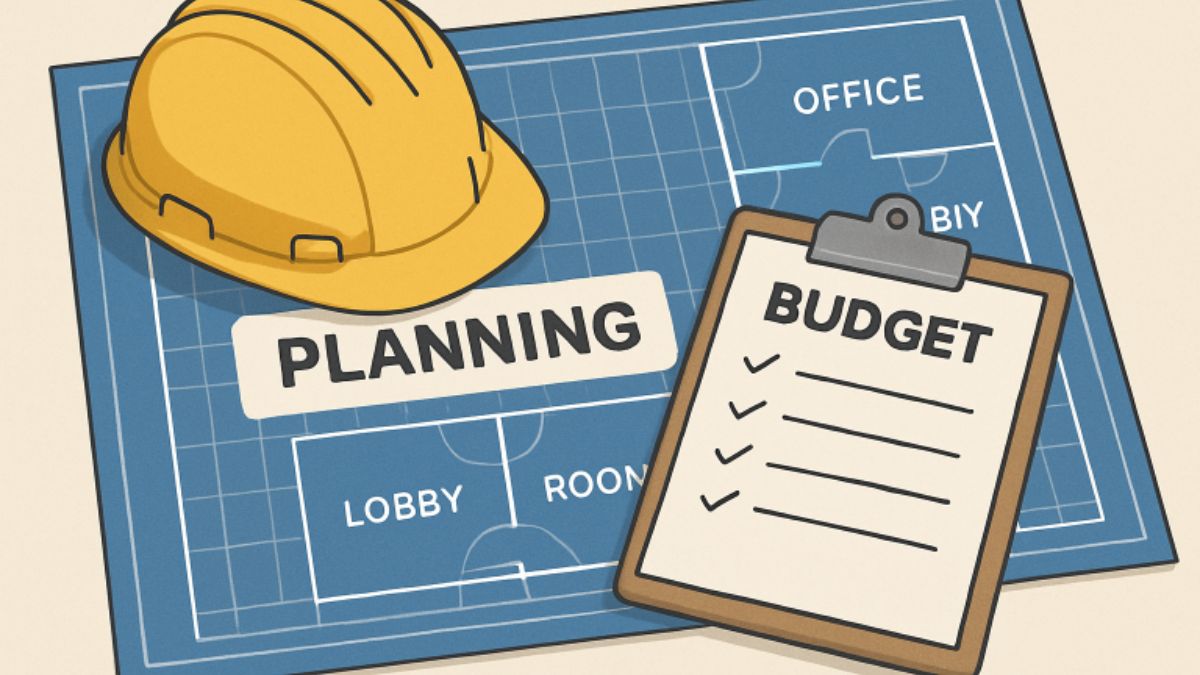HOME
A Beginner’s Guide to Using and Maintaining a Bubbler Pipe

Are you curious about enhancing your smoking experience with a functional and stylish device? A glass bubbler might be the perfect accessory for you. Combining the portability of a traditional hand pipe with the smooth, water-filtered experience of a bong, a bubbler pipe offers the best of both worlds. Whether you’re new to smoking or simply exploring better ways to enjoy your sessions, understanding how to use and care for a glass bubbler can elevate your experience. Let’s explore everything you need to know about these versatile smoking accessories.
What Is a Bubbler Pipe, and Why Should You Use One?
A glass bubbler is a compact smoking device with a small water chamber to filter and cool smoke. Unlike standard pipes, which don’t use water filtration, bubblers provide smoother hits and reduce harshness on the throat and lungs. They’re an excellent choice for smokers seeking portability without sacrificing the benefits of water filtration.
How Does a Glass Bubbler Work?
The glass bubbler’s operation is straightforward yet effective. The water chamber filters the smoke, removing impurities and cooling it before inhalation. Here’s how it typically works:
- Packing the Bowl: Start by packing your desired smoking material into the bowl. Ensure not to pack it too tightly, as good airflow is essential for an even burn.
- Adding Water: Fill the bubbler’s water chamber enough to submerge the downstem. Avoid overfilling to prevent splashback.
- Lighting and Inhaling: Light your material while inhaling through the mouthpiece. As you draw, the smoke passes through the water, creating bubbles that filter and cool it.
This simple mechanism delivers a smoother, more enjoyable smoking session compared to dry pipes.
The Benefits of Using a Glass Bubbler
Glass bubblers are not only functional but also cater to various preferences. Here are some key benefits:
- Portability: Bubblers are smaller than traditional bongs, making them easy to carry and use on the go.
- Smooth Smoke: Water filtration reduces harshness, offering a more pleasant smoking experience.
- Versatile Designs: Available in various shapes, sizes, and colors, they cater to personal style preferences.
- Ease of Use: Bubblers are beginner-friendly, requiring no complicated parts or assembly.
- Durability: Many glass bubblers are crafted from sturdy materials like borosilicate glass, ensuring longevity when handled carefully.
The glass bubbler is a top choice for those seeking a balance between function and convenience.
How to Choose the Right Glass Bubbler for Your Needs?
Selecting the right glass bubbler depends on your preferences and lifestyle. Consider the following factors:
- Size: Compact models are great for portability, while larger ones provide enhanced filtration.
- Material: Glass bubblers are popular for their clean taste and aesthetic appeal. Silicone options are more durable and travel-friendly.
- Style: From hammer-shaped designs to sidecar styles, choose a design that complements your smoking habits and aesthetic preferences.
- Ease of Cleaning: Some designs are easier to clean than others. If you prioritize simple maintenance, consider a model with detachable parts.
By evaluating these factors, you’ll find a glass bubbler that suits your needs.
Using Your Glass Bubbler for the First Time
Trying out your glass bubbler for the first time is an exciting experience. Follow these steps for a seamless start:
- Inspect the Device: Check for any cracks or defects in the glass, especially if it’s new. A quick inspection ensures safe use.
- Clean Before Use: Even new pipes can have residue. A quick rinse with warm water ensures cleanliness and removes potential manufacturing debris.
- Fill Correctly: Use clean water and avoid overfilling. Test the draw to ensure smooth airflow before packing the bowl.
- Pack the Bowl Gently: Avoid overpacking it, as it may restrict airflow. Loosely packed material ensures a steady and enjoyable burn.
Taking these steps ensures your first experience is smooth and enjoyable.
Tips for Keeping Your Glass Bubbler Clean
A clean glass bubbler ensures a better smoking experience and extends the device’s lifespan. Here’s how you can maintain it:
- Daily Rinse: After each use, empty the water chamber warmly. This prevents resin buildup and keeps your bubbler fresh.
- Deep Cleaning: For a thorough clean, use isopropyl alcohol and coarse salt to remove resin buildup. Shake gently and rinse thoroughly with water. Let it air dry before use.
- Avoid Abrasives: Use soft brushes or pipe cleaners to clean intricate parts without scratching the surface. Do not use harsh tools that might damage the glass.
- Replace Water Regularly: Stale water affects the taste and performance of your bubbler. For optimal results, change the water after every session.
Regular maintenance keeps your glass bubbler looking pristine and enhances its performance.
Common Mistakes to Avoid with Glass Bubblers
Using a glass bubbler is simple, but there are common pitfalls to steer clear of:
- Overfilling: Too much water can lead to unpleasant splashback, disrupting your session.
- Neglecting Cleaning: Residue buildup affects flavor and function. Clean your bubbler regularly to ensure peak performance.
- Using Harsh Chemicals: When cleaning, use isopropyl alcohol and salt. Avoid harsh cleaners that may damage the material or leave residues.
- Improper Storage: Always store your bubbler securely to avoid accidental damage. Using a padded case is ideal for travel.
Avoiding these mistakes can ensure a longer lifespan and better performance for your glass bubbler.
Enhancing Your Smoking Sessions with a Glass Bubbler
Maximizing your glass bubbler experience is all about technique and care. Experiment with different smoking materials and packing methods to find what works best for you. Use fresh, filtered water for every session to ensure the cleanest taste and smoothest smoke.
You can also explore using accessories like screens or filters to prevent material from clogging the bowl. These minor adjustments can greatly improve your overall experience.
Why Bubblers Stand Out Among Smoking Accessories?
Glass bubblers offer a unique combination of benefits compared to other smoking devices. They’re more portable than bongs, more efficient than dry pipes, and more versatile in design than many other accessories. Their water filtration system sets them apart, providing a smoother smoking experience that appeals to both beginners and seasoned smokers.
Whether hosting a smoking session with friends or enjoying a quiet moment alone, a glass bubbler is a reliable and stylish choice.
Final Thoughts
A glass bubbler is more than just a smoking accessory—it’s a gateway to smoother, more enjoyable sessions. Its compact size and the benefits of water filtration make it a must-have for beginners and seasoned smokers alike. By choosing the right bubbler and maintaining it properly, you’ll elevate your smoking experience with every use. Whether at home or on the go, a glass bubbler is perfect for those seeking smooth hits and unmatched convenience.
HOME
Key Considerations When Planning a Commercial Construction Project

Commercial construction projects require careful planning, as each decision made in the early stages can impact the project’s success far into the future. Whether you are breaking ground on a retail space, office complex, or pursuing commercial rebuilds Maryland, it’s essential to balance vision with strategy from day one. The steps you take before construction begins are often the most influential, affecting everything from costs and timelines to occupant satisfaction.
By addressing critical elements such as budgeting, scheduling, team selection, and compliance with regulations, you can improve the likelihood of delivering a project that meets both business goals and stakeholder expectations. Considering environmental impact, future adaptability, and a collaborative approach will also help ensure the property’s long-term value and reputation.
Commercial construction projects can be particularly complex, involving multiple stakeholders, tight deadlines, and substantial financial investment. Proactive planning and a holistic viewpoint can make the difference between a project that flounders and one that exceeds expectations. According to Forbes, strategic foresight and flexibility are crucial to overcoming the numerous challenges prevalent in today’s construction environment.
Establish a Realistic Budget and Timeline
Your construction budget is more than just a list of costs—it’s a dynamic document that guides the entire project. Begin by accounting for materials, labor, permits, fees, and contingencies for unforeseen events such as market fluctuations or adverse weather. Allocating a contingency fund of 5-10% is a prudent move that allows projects to weather unexpected costs without jeopardizing completion.
Crafting a realistic timeline is equally essential. Take the time to assess how external factors, such as supply chain complications or regulatory holdups, may introduce delays. Regular progress reviews and built-in schedule buffers help maintain momentum, making it easier to adapt should delays arise.
Assemble a Competent Project Team
Success in commercial construction hinges on the expertise brought by your team. Select reputable architects, engineers, contractors, and specialists whose experience aligns with your project’s complexity. Equally important is fostering a collaborative environment that encourages open communication, as this helps reduce misinterpretations and mistakes that could inflate budgets or extend timelines.
Formalizing roles and responsibilities and holding regular coordination meetings will keep everyone aligned and efficiently move the project forward. As highlighted by Construction Dive, frequent communication and clearly defined processes are proven to reduce costly rework and boost productivity.
Understand Zoning Laws and Obtain Necessary Permits
Before launching construction, ensure compliance with all relevant zoning laws and secure the necessary permits. Local government regulations vary and may restrict aspects of your design, use of the property, or even the materials allowed. Early engagement with municipal authorities can reveal unexpected requirements and help prevent violations that lead to fines or costly design changes midway through the project.
Prioritize Functionality and Design
The balance of visual appeal and practical utility is central to a successful commercial space. Consider how layout decisions will support everyday operations, accessibility, and occupant comfort. Factors such as lighting, acoustics, and spatial flexibility can drastically impact productivity and make a property more attractive to tenants or clients. Integrating features for ADA compliance ensures inclusivity and maximizes usability.
Incorporate Sustainability and Energy Efficiency
Sustainable building practices reduce long-term operational costs and environmental impact. Implementing measures like high-efficiency HVAC systems, low-flow fixtures, LED lighting, and solar panels reflects a commitment to green building, which can also attract tenants seeking environmentally conscious workspaces. Utilizing recycled materials and pursuing certifications like LEED can enhance market appeal and demonstrate broader corporate responsibility.
Achieving energy efficiency is not only an investment in the planet, but it can also result in utility incentives or rebates, thereby reducing overall expenditures. As detailed by the U.S. Environmental Protection Agency, integrating lifecycle thinking into construction helps promote sustainability in every phase of the project.
Plan for Future Growth and Flexibility
Design flexibility enables a commercial property to adapt as business requirements evolve or market conditions shift. Versatile spaces, modular walls, and adaptable utility systems make it easy to reconfigure workplaces or expand with minimal disruption. This future-resilient approach not only supports organic growth but can prolong the viability of a building for new uses over time.
Ensure Quality Control and Safety Measures
Quality assurance begins before ground is broken and continues throughout the construction process. Implement standardized best practices for inspections and testing, and monitor for alignment with project specifications and safety codes. Enforcing occupational health and safety standards, conducting regular training, and maintaining transparent channels for workers to report issues help protect both people and the project’s reputation. The Occupational Safety and Health Administration (OSHA) provides valuable resources for maintaining industry safety standards.
Engage with the Community
Proactive engagement with neighboring communities can accelerate project approvals and foster goodwill. Hosting public input sessions or updating stakeholders through local news channels demonstrates commitment to positive relationships and social responsibility. Collecting and responding to feedback helps mitigate concerns and encourages project acceptance, reducing potential friction with local stakeholders.
Final Thoughts
Successful commercial construction projects are rooted in thoughtful planning, regulatory diligence, and ongoing collaboration. By considering each essential factor—from budgeting and personnel to sustainability and community engagement—you can deliver outcomes that withstand today’s challenges while preparing for tomorrow’s possibilities.
HOME
Creative Ways to Build Safer Horse Jumps for All Riders

Horse jumping is a thrilling equestrian sport that combines athleticism, agility, and trust between horse and rider. However, with the excitement comes a certain degree of risk, which makes safety an essential factor to consider every time a horse and rider enter the arena or take on a new course. Over the years, the introduction of innovative materials and modern safety features has significantly contributed to transforming training spaces into more secure environments, all while maintaining the challenging spirit these jumps are meant to foster. For riders, trainers, and stable owners considering the addition of new horse jump designs—especially those seeking to strike a balance between exhilaration and well-being—it’s vital to understand the most effective construction methods available today. The right approach can keep both horses and humans safe, minimizing the likelihood of injury and supporting long-term participation in the sport.
By leveraging creative building techniques and selecting suitable materials, it’s possible to prevent many of the common injuries and accidents often associated with traditional horse jumps. These strategies not only prioritize safety but also frequently reduce overall costs by utilizing readily available and affordable resources. Additionally, many of these methods promote sustainability by reusing or repurposing everyday items, which is an increasing concern in contemporary equestrian practice. Whether you are a professional trainer responsible for a bustling academy or a passionate DIY enthusiast constructing obstacles in your own backyard, the commitment to building safer jumps is a significant contribution to a broader culture of responsible and sustainable equestrianism. In turn, this encourages inclusivity and lifelong enjoyment for riders at every level, from those just starting to those mastering advanced courses.
Utilizing Plastic Barrels for Versatile Jump Designs
Plastic barrels offer a practical and innovative alternative to traditional jump wings and fillers, providing excellent strength, weather resistance, and versatility at a fraction of the expense of commercial materials. Filled with sand or water, these sturdy barrels remain in place even when horses brush past or knock them, ensuring stability during use. Their surfaces can be easily cleaned, which helps reduce risks associated with slippery or dirty setups. Jump cups explicitly designed for barrel use are readily available. They can be attached directly to the sides, ensuring that jump rails are securely held but can dislodge safely in the event of force. This method enables quick and frequent course modifications, allowing for easy tailoring of exercises to individual horses and riders, and for enhancing the training routine without the need for multiple sets of heavy equipment. The flexibility plastic barrels provide is key for instructors working with students of diverse skills and confidence levels. To gain more insight on effective, budget-friendly materials and straightforward construction methods, have a look at the tips from Horse & Hound.
Repurposing Wooden Pallets for Customizable Jumps
When it comes to resourcefulness and sustainability, wooden pallets stand out as one of the best materials for building horse jumps. Readily available from warehouses, stores, or community giveaways, these pallets can easily be transformed into jump standards, gates, or fillers. Before integrating a pallet into your jump, a thorough safety check is crucial—ensure that all nails, loose boards, and potential splinters are removed. Sanding down any rough edges significantly minimizes injury risk for both horse and rider. Once prepped, wooden pallets can be customized for specific courses or themes: painting them with bright, horse-safe colors or adding weather-resistant decorations increases their visibility and attractiveness, keeping both horses and riders engaged and alert. Furthermore, since pallets can be easily reconstructed or combined, they allow the creation of jumps with varying heights, widths, and complexity; this flexibility is particularly valuable for accommodating a range of skill levels and promoting gradual, safe progression in training routines.
Incorporating Rounded Edges and Collapsible Components
Paying attention to the finer details of construction can make a significant difference in safety outcomes. Jumps with sharp or pointed corners have historically caused injuries when horses graze or knock against them. By intentionally designing jump elements with rounded edges—either by sanding wood, using PVC piping, or fitting protective edge covers—you greatly reduce the likelihood of cuts, bruises, or more serious trauma. Even more impactful are collapsible components, such as breakaway cups, which are engineered to release their contents upon significant impact rather than remaining rigid. This “give” can help prevent falls or entanglement and is especially important when working with green horses or novice riders. Collapsible features are now commonly found in modern jumping equipment, particularly for cross-country and eventing, where obstacles often require a solid-looking yet safer construction. For a look at the latest developments in jump safety and construction techniques, check out The Chronicle of the Horse for articles and updates from leading industry experts.
Implementing Frangible Pins for Enhanced Safety
One of the most significant safety advances in recent years has been the widespread adoption of frangible pins in competitive horse jumping. These specialized pins are engineered to break or collapse under the weight or force of a horse hitting a jump, causing potentially dangerous solid elements to fall away harmlessly. This dramatically reduces the risk of a rotational fall, which is one of the most serious types of accidents in jumping disciplines, especially eventing. The use of frangible technology is now considered best practice for permanent jumps and is increasingly being adopted by safety-focused facilities and competitions. By integrating frangible pins, builders create an extra layer of safety that can mean the difference between a close call and a catastrophic injury. For a closer look at how frangible pins and innovative safety systems are making an impact, the United States Eventing Association provides guidelines, technical documents, and real-world case studies to help builders and trainers effectively apply these concepts.
Regular Maintenance and Inspection of Jumps
Safety is not just a matter of initial construction but ongoing diligence. Even the best-designed jumps lose their integrity over time due to exposure to weather, repeated use, or accidental knocks. Establishing a regular maintenance and inspection routine is key to ongoing safety. Take the time to examine all surfaces for loose parts, worn areas, or sharp protrusions. Wooden jumps should be resealed or repainted with non-toxic, weather-resistant products to ensure they withstand rain and sun exposure without becoming brittle or splintered. Metal components must be inspected for signs of rust, fatigue, and loose connections. This commitment to upkeep helps maintain confidence among riders and horses alike and protects the investment made in equipment by extending its usable life.
Customizing Jumps to Suit Various Skill Levels
One significant advantage of modern DIY or custom-built jumps is adaptability. Adjustable and modular designs empower trainers and riders to alter jump height, width, and challenge quickly; stackable fillers, sliding or removable jump cups, and interchangeable decorative panels make these adjustments both safe and straightforward. This adaptability is indispensable in lesson programs, clinics, or any setting serving a range of ages and abilities. Starting with lower, less complex jumps helps foster confidence in new riders and green horses, while more experienced jumpers can be safely challenged with higher, wider, or uniquely configured obstacles. The ability to fine-tune jumps as skills progress supports steady learning and tailors the risk to the rider’s level. For creative ideas on bringing modular designs to your arena or field, inspiration is only a click away—publications like Horse Illustrated frequently feature projects for all experience levels.
Conclusion
Building safer horse jumps is far more than simply assembling obstacles—it’s a thoughtful process that must balance creativity, responsibility, and practicality. By using accessible, budget-friendly materials, incorporating advanced safety features, customizing designs for all ability levels, and maintaining a commitment to ongoing upkeep, trainers and riders can create a safe and dynamic training space that fosters progress and enjoyment. Ultimately, these innovations enrich the equestrian experience and help ensure that both horses and their riders can confidently pursue their sport for years to come.
HOME
Effective Non-Surgical Strategies for Managing Chronic Pain

Chronic pain is a significant and persistent issue affecting millions of people worldwide, disrupting daily activities, work productivity, and overall well-being. While surgical intervention is sometimes considered, many individuals seek relief through safer, non-invasive methods to manage pain and improve quality of life. Early collaboration with healthcare experts and specialized clinics, such as a pain management clinic St Augustine, FL, can offer tailored guidance on proven non-surgical approaches that empower you to take control of your pain journey.
Chronic pain management benefits most from a holistic, multi-faceted approach that combines physical rehabilitation, alternative therapies, lifestyle changes, and modern medical advancements. This patient-centered strategy addresses both physical and emotional aspects of pain, helping reduce reliance on medication and avoid invasive procedures. Staying informed about evidence-based treatments empowers individuals to make informed decisions and achieve long-term relief, while also improving their daily functioning.
Physical Therapy
Physical therapy remains one of the most recommended and effective non-surgical solutions for managing chronic pain. A trained physical therapist can identify mobility issues, muscular imbalances, and movement patterns that may contribute to ongoing discomfort. Through a combination of manual therapy, stretching, strengthening exercises, and functional movement training, patients often experience long-term pain reduction, increased flexibility, better balance, and a decreased risk of reinjury. The benefits extend beyond symptom relief to empower individuals with the knowledge and tools to protect their bodies during everyday activities.
Alternative Therapies
Alternative and complementary therapies have gained immense popularity as people seek holistic options for pain control. Practices such as acupuncture utilize fine needles to stimulate the body’s nerves and muscles, prompting the release of natural painkillers. Chiropractic care addresses mechanical dysfunctions—especially in the spine—that might aggravate pain, while massage therapy promotes relaxation, relieves muscle tightness, and increases circulation. Many patients report reduced reliance on conventional pain medications thanks to these integrative approaches, which can enhance overall treatment effectiveness when combined with physical therapy or medical management.
Mindfulness and Cognitive Behavioral Therapy
The psychological impact of chronic pain cannot be underestimated. Mindfulness techniques, notably mindfulness-based stress reduction (MBSR) and cognitive behavioral therapy (CBT), provide valuable methods for managing pain perception and emotional responses. These therapies guide individuals in recognizing pain triggers, challenging negative thought patterns, and building resilience through healthy coping strategies. Research has shown that incorporating mindfulness and CBT can significantly decrease pain intensity, improve sleep quality, and reduce the risk of depression and anxiety associated with chronic pain.
Lifestyle Modifications
Adopting practical lifestyle changes is a cornerstone of sustainable, non-surgical pain relief. Regular physical activity, tailored to an individual’s limitations and capabilities, helps maintain joint and muscle health and improves pain tolerance over time. Mind-body practices, such as yoga and tai chi, can increase flexibility, foster relaxation, and combat stress, thereby reducing pain experiences. Maintaining a balanced diet—rich in anti-inflammatory foods such as leafy greens, berries, fatty fish, and nuts—can contribute to overall well-being. Adequate, restorative sleep is especially crucial, as poor sleep can intensify pain sensitivity.
Furthermore, achieving and maintaining a healthy weight can greatly ease the burden on weight-bearing joints, particularly for individuals with arthritis or lower back pain.
Emerging Treatments
Innovation in non-surgical pain management has led to the development of exciting new therapies. VER-01, a cannabis-derived medication, has demonstrated superior pain control with fewer side effects in clinical studies among patients suffering from chronic lower back pain, when compared to both placebos and opioids. Patients using VER-01 reported not only pain relief but also better sleep and an overall improvement in daily functioning.
Another promising option is low-dose radiotherapy, which, though traditionally used for cancer, has been shown in recent trials to safely and effectively reduce pain from mild-to-moderate osteoarthritis. Clinical results revealed a significant number of patients experienced meaningful pain relief and functional improvement, particularly in the knees, following this low-risk treatment.
Conclusion
Managing chronic pain effectively does not always require surgery. By integrating physical rehabilitation, alternative therapies, mindfulness, healthy lifestyle habits, and the latest medical innovations, individuals can find substantial relief and regain functionality. Collaborating with a qualified pain specialist or dedicated pain management clinic ensures that each strategy is personalized, improving the likelihood of long-term success. As new research and treatments continue to emerge, the outlook for those living with chronic pain grows brighter, offering hope for an active, fulfilling life beyond persistent discomfort.
-

 FASHION10 months ago
FASHION10 months agoTop Kids Clothing Trends for 2025 – What’s In Style This Year?
-

 FASHION1 year ago
FASHION1 year agoElegant Winter Party Style: Trendy Long-Sleeve Dresses and Essential Hair Care Tips
-

 AUTOMOTIVE11 months ago
AUTOMOTIVE11 months agoMitsubishi Pajero 3.0 V6 – Specs, Performance & Guide
-

 BUSINESS1 year ago
BUSINESS1 year agoHOW TO SHOP GOODWILL OUTLET STORE
-

 HOME10 months ago
HOME10 months agoTributePrintedPics Review: A Deep Dive into Quality, Design, and Customer Experience
-

 CULTURE10 months ago
CULTURE10 months agoUncuymaza Unveiled: The Cultural Significance Behind the Craft
-

 LIFESTYLE10 months ago
LIFESTYLE10 months agoDiscovering Luuxly.com: Your Ultimate Guide to Luxury Lifestyle
-

 HOME11 months ago
HOME11 months agoExploring the World of TG Tube: A Comprehensive Guide
